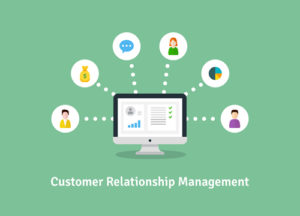Today’s students are on a journey. To them, it’s about more than a degree; it’s about a holistic experience that is as tailored to them as their Netflix account and prepares them for the new realities of the ever-changing, automated workplace.
Now, more than ever, the student is in control. They’re looking for a learning experience upon which they can build their lifelong journey, and a community of support to help them chart their path into the future.
Data silos: A common challenge in higher ed
Students expect a personalized experience. At many schools, however, different departments have different constituent relationship management systems (CRMs) based on units or schools. That leads to disjointed outcomes and costs. And, the longer your silos exist, the more difficult it will be to consolidate the data from those siloed CRMs into one solution that can provide a full view across the lifetime of your constituents—not just while they’re students.
At Indiana University (IU), we used to have this issue. If you’re like we were, you may be dealing with a bunch of siloed CRMs. We decided to change from treating a CRM as a small unit-based system to an enterprise system, similar to human resources (HR) or finance. This enables strategic outcomes and a more efficient cost model.
From a purely student perspective, IU’s various units and schools each had separate interactions and information. Students essentially had to start by repeating details that have already been logged, just by someone else, somewhere else.
Where we were: The cost of the status quo
With our previous data silos, we lost opportunities to provide personalized communications. For recruitment, this was not preferable, nor did it use our staff time well. The old, disjointed, inefficient model undermined our focus on providing excellent student services and support.
At IU, many units and/or schools had already selected Salesforce.org for their solution. While that led to 16 separate instances across the university, it confirmed that Salesforce.org was the right platform to scale across the breadth and diversity of our constituencies, which included:
- Undergraduate recruitment/admissions, tracking approximately 430,000 current and historic prospects
- Communication/marketing with marketing cloud
- HR case management
- Graduate school recruiting & admissions
(Next page: 7 tips for choosing your college’s CRM tool)
7 considerations when choosing your CRM tool
Here’s what we learned along the way:
- Be strategic and serve the common good.
What does the whole university need? Consider what outcomes are most important to the common good. Identify how you can serve those missions through the CRM tool. - Address critical needs.
If you do not initially have a strategic charge, look for places where a higher-ed CRM can be established that serves a critical need and will eventually develop an enterprise charge. Look for existing strategic plans that have aspects that a CRM can facilitate. - Get buy in and think “people first.”
At IU, we had considerable momentum from the admissions recruitment, communications, and HR projects that helped make the case for an enterprise-wide implementation. A CRM alone will not create change: It takes vision, people, and leadership driven by a key institutional strategic goal. Technology is just a tool. - Establish governance.
When you’re thinking enterprise-wide, you can’t have a do-it-yourself mindset. Make sure to think about how to accommodate expanded adoption and evolving functional needs of different users, departments, and schools. Prioritization by executive leadership is essential. - Provide how-to resources and support.
To get the most from your enterprise-wide CRM, don’t expect people to be experts on day one. It can help to provide essential resources, user support, and introductory workshops to ensure successful adoption. - Consider the 360-degree platform options.
Don’t make students repeat their information for different departments. Pick a platform that enables you to have a solid foundation toward a 360-degree view of constituents. From lead to suspect to prospect to student to engaged alumni, an enterprise CRM is essential to personalize the experience. - Choose flexible platforms you can grow with.
Today’s students like getting SMS messages rather than emails because they prefer the immediacy of the communication. Next year, it may be something new. Pick a platform that meets students where they are. “Future-proof” sounds like jargon, but the reality is that you need to think ahead when going enterprise-wide. What CRM options are flexible enough to meet your current and future needs? If the vendor you choose makes it easy to expand your use in the future, it will be easy to grow.
- Fully Homomorphic Encryption can revolutionize education - April 29, 2024
- Survey: More students want to go to graduate school - April 24, 2024
- Educause, AWS launch generative AI readiness assessment tool for higher ed - April 23, 2024

